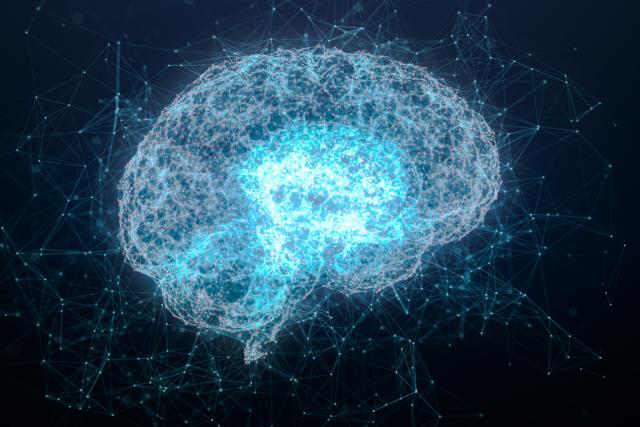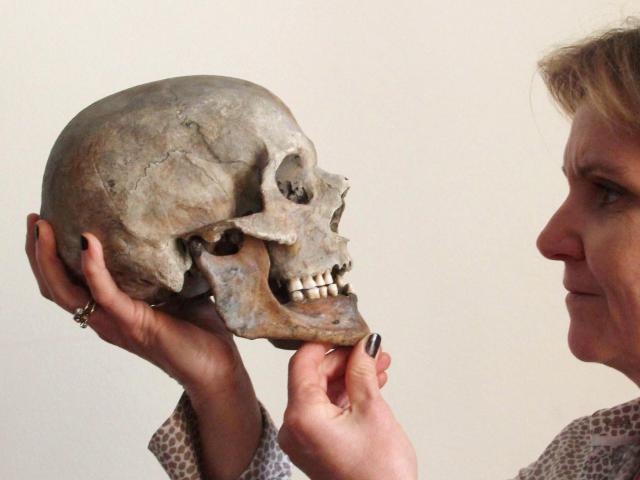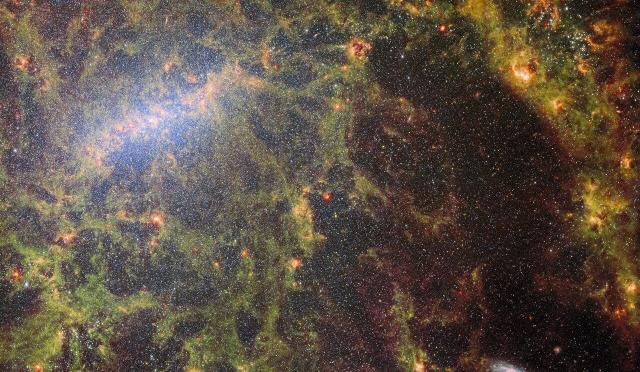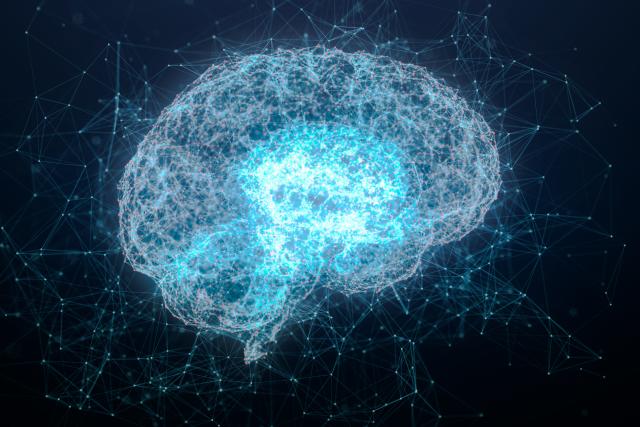Science Daily News | 05 Jun 2023

Views (103)

A lost medieval city that legend says was swallowed by the sea as punishment for its carnal sins mapped for the first time
The legend of the lost city of Rungholt, in Germany, says a great storm in 1362 destroyed it as revenge for its inhabitants' sins.

The legend says that the city of Rungholt was destroyed as revenge for its inhabitants' sins.
The remains of the "northern Atlantis" have now been charted off the coast of Germany.
Researchers say such finds provide unparalleled insights into the lives of the North Frisian people
Archaeologists have mapped out the lost city of Rungholt for the first time.
So the stories go, the life of abundance led to an immoral life, and the end came around Christmas when a gang of young drunkards tried to force a priest to give a pig the last sacrament at a local inn.
The cleric went to the church and prayed and asked God to punish the young men. He left town the next day, and shortly after, the great storm hit that wiped Rungholt off the face of the Earth.
In medieval legends, the sound of its bell tower could be heard from the depths of the North Sea.
While some historians questioned whether the town ever existed outside myth, new research has uncovered the remains of this "northern Atlantis" in the Wadden Sea, per the report.
Archaeologists from Christian-Albrecht University in Kiel found approximately 1.2 miles series of medieval mounds around an island now known as Südfall after mapping the site with a geophysical survey.
The press release says that investigations into the tidal flats continued to "bring to light significant new finds" and provided unparalleled insights into the lives of the North Frisian people.
But the researchers are working against the clock, as the conditions continually eat away at the remains.
"The medieval settlement remains are already heavily eroded and often only detectable as negative imprints," Hanna Hadler, who works at the Institute of Geography at Mainz University, said.
"So we urgently need to intensify research," she added.
An albino giant panda thought to be the only one in the world was filmed in the wild in China — take a look
The unique giant panda was spotted in China's Wolong National Nature Reserve in Sichuan Province, per the South China Morning Post.

An all-white giant panda was spotted in China's Wolong National Nature Reserve.
The reserve monitors the panda's movements and routines through motion-activated cameras.
It is thought to be the only albino giant panda in the world.
A rare all-white panda was spotted for the first time since 2019 in a Chinese nature reserve earlier this year.
The panda was first captured by cameras in 2019, after which the reserve set up a team to monitor the panda's movements and routines through motion-activated cameras, SCMP reported.
"It is still unclear whether its gene will be inherited and steadily passed on in the small panda population, and more follow-up research is needed," Li Sheng, a researcher at Peking University, said.
New image from the James Webb Space Telescope shows thousands upon thousands of stars in a galaxy 17 million light years away
The James Webb Space Telescope is peering into the mysterious hearts of galaxies. Most recently, it turned its sites on the NGC 5068 galaxy.

The James Webb Space Telescope snapped a new image of a galaxy 17 million light-years away.
Thousands upon thousands of stars are visible, many of which are concentrated in the galaxy's heart.
JWST is peering into the hearts of many galaxies to help scientists better understand star formation.
This region appears so bright because that's where most of the stars are concentrated. That's also where all the action is.
In fact, NGC 5068 is just one in a series of other galaxies Webb is observing for a project to help us better understand star formation. Webb has also taken images of the spiral galaxy IC 5332:
And the heart of galaxy M74, aka the "Phantom Galaxy":
Infrared wavelengths are too long for the human eye to detect. But they're especially important for studying in space because they allow JWST to peer past obstructive visual light that would otherwise block our ability to see into the hearts of galaxies and their bustling environments of star formation.
"By observing the formation of stars in nearby galaxies, astronomers hope to kick-start major scientific advances with some of the first available data from Webb," NASA said.
Watch a video of NGC 5068 below:
Climate change: How is my country doing on tackling it?
Find out how the world's major economies are doing on cutting their emissions and what lies ahead.

Every year countries pledge to cut their greenhouse gas emissions in an effort to curb the impacts of climate change.
But still global temperatures keep rising.
The question now is whether the world can stop at 1.5C.
On Monday, countries meet for the Bonn climate conference, to discuss their pledges and look ahead to the next big UN climate conference, COP28, which opens in Dubai in November.
So which countries are on track with their climate commitments to help stick to 1.5C and which are not? Find out using out clickable table below.
Additional reporting by Becky Dale and Esme Stallard.
Zapping a rodent's brain can put it into suspended animation. Scientists want to one day use the same technique for humans traveling to Mars.
Sending ultrasound signals into rodent brains puts them in a torpor, scientists found, prompting hope the same technique could be used in humans.

Scientists have zapped mice and rats into a suspended-animation-like state called torpor.
The state was induced by beaming ultrasound waves into a precise spot in the rodent's brains.
This technique could one day be used on humans for space travel and medical purposes.
Scientists have been able to induce a torpor state in mice and rats using ultrasound, bringing them a step closer to finding a way to induce suspended animation in humans.
They hope this could one day save on energy and costs of long-haul space travel to planets like Mars.
"We could envision astronauts wearing a helmet-like device designed to target the hypothalamus region to induce a torpor-like state," she said.
Torpor is a state of suspended animation whereby animals may look like they are going to sleep, but they are actually drastically reducing their metabolic activity, usually in response to extremely adverse conditions.
Mice and rats were fitted with tiny helmets to send ultrasonic waves to the brain. The scientists observed that these waves were effectively able to push the rodents into a state of torpor.
For about an hour after the ultrasound pulse, the mice's body temperatures and metabolism dropped, a state similar to torpor seen in nature. The mice's average body temperatures dropped by up to 6.25 degrees Fahrenheit (3.5 degrees Celsius) and their heart rate and oxygen usage dropped as well.
The rats' body temperatures also dropped, though to a lesser level, up to 3.57 F (2 C).
The fact that this state was triggered in rats is encouraging, as these rodents "do not naturally enter torpor, suggesting the possibility that similar effects could be induced in humans," the scientists said in the study.
For Spaceworks, astronauts would be induced into torpor for 14 days at a time and woken for three or four days. That way, there would always be an active astronaut on shift to monitor proceedings.
The rapid progress in the basic science to support this innovation is encouraging.
Other studies, like this recent one, suggest hacking the brain's dormant torpor mechanism to induce this state. Previous studies had suggested torpor could be induced with drugs, but the advantage of the approach in this recent study, is that it is noninvasive, precise, and safe, scientists said in the study.
"As far as we know, there is nothing unique about homo sapiens that would prevent our species from hibernating, and I believe the capacity is there but it needs to be unlocked," Vladyslav Vyazovskiy, professor of sleep physiology at the University of Oxford, told the BBC.
"To me, the real question is not whether we can hibernate, but how… How do neurons in the hypothalamus 'know' that it is time to hibernate? Who tells them? This is the real question," he said.
Nevertheless, most of the research into long-ranging suspended animation is still only being done on animals, and we're likely still a long way away from testing it on humans.
"Further research is still required to determine the safety and feasibility of this approach in humans," Chen told Live Science.
Scientists saw a surge in brain activity in dying patients that could finally help explain mysterious near-death experiences
A recent study found that some patients' brains continued pumping out gamma waves even after their hearts had stopped.

Scientists observed a surge in brain activity in dying patients even after their hearts stopped.
The activity consisted of gamma waves, which are associated with lucid dreams and hallucinations.
Scientists say their observations may help explain bizarre reports of near-death experiences.
The four patients in the recent study were comatose and removed from life support, with their families' permission. At this point, electroencephalogram sensors measured the patients' brain activity as they went into cardiac arrest.
"The discovery of the marked and organized gamma activities in the dying brain suggests that [a near-death experience] is the product of the dying brain, which is activated at death," the lead author of the study, Jimo Borjigin, told Vice.
"As far as I am concerned, our study may be as good as it will ever get for finding neural signatures of near-death consciousness," Borjigin told Vice, adding that the "only thing better than this is to have the patients survive to tell the tale that correlates with the detected neural signatures."
That said, Borjigin aims to collect more data on dying human brains in the future to better understand the human death experience, per Vice.
0 Likes
